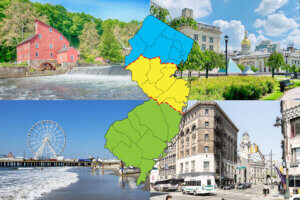The Monmouth University Polling Institute released the first wave of results from a tracking panel of New Jersey residents who were displaced by Superstorm Sandy for at least one month. Few of these families feel like they are close to full recovery and most feel that the state’s rebuilding efforts have overlooked them.
Few of those who were hit hardest by Sandy feel they have returned to their pre-storm living conditions. Only 10% of those surveyed say they have fully recovered – including just 18% who are back in their homes and 3% who remain displaced from their pre-Sandy home. [Note: some of those who are still “displaced” have decided to permanently relocate.] By contrast, a statewide poll conducted by Monmouth University in September found that the vast majority of all New Jersey residents (76%) said their families have fully recovered from the storm.
Among those who participated in the panel survey of the most-impacted residents, 43% hope to be recovered before Sandy’s second anniversary next year, 31% say it will take longer than that, and 16% say they will never fully recover. One-quarter (25%) of those surveyed say their family’s employment situation has worsened since the storm – including 30% of those still displaced and 20% of those who are back in their homes.
On the whole, current and former displaced residents surveyed by Monmouth University tend to be more dissatisfied (61%) than satisfied (38%) with New Jersey’s recovery efforts so far. Residents who continue to be displaced (76%) are much more negative about these efforts than those who are now back in their homes (47%). By contrast, fully 76% of all New Jerseyans said they were satisfied with the state’s recovery efforts according to a September Monmouth University Poll.
Among impacted residents in the panel survey, the vast majority (75%) say that people like them have largely been forgotten in the recovery effort – including 85% of those still displaced and 64% of those who have returned to their homes. Only 25% of those surveyed feel that the state’s recovery effort has focused on helping them.
“The Sandy recovery effort is certainly a tale of two states. New Jerseyans who were displaced by the storm, even if they are now back in their homes, are significantly more negative than other Garden State residents about the pace and focus of recovery,” said Patrick Murray, director of the Monmouth University Polling Institute, which is conducting the ongoing study under a grant from the New Jersey Recovery Fund.
The panel of impacted residents was also asked about the types of assistance they needed after Sandy first hit and the types of help they still need today. In Sandy’s immediate aftermath, the most widespread needs included replacing furniture and appliances (61%), finding a temporary place to stay (53%), and help making rent payments (42%). Those needs have diminished, but – with the exception of finding temporary housing – remain urgent for a good number of New Jersey families affected by the storm. Specifically, 42% of those surveyed say they still need help replacing furniture and appliances and 26% need help paying rent. Also, 23% say they currently need help keeping up with their current mortgage payments, which is similar to the 26% who said that was an issue right after the storm. Only 13% say they still need to find a temporary place to live.
Seventeen percent of affected residents surveyed said they needed help finding a permanent place to live immediately after the storm. That number stands at 9% today. Also, 35% of affected respondents said they needed help feeding their families right after the storm; which is at 18% now.
The extent of other needs has not changed very much from right after Sandy to today. Specifically, 17% of those surveyed say they still need help paying their utility bills, 17% need help with debt management, 14% need help with health care costs, and 14% need help with employment. These results are similar to the reports of these needs right after the storm.
For each type of assistance, families who continue to be displaced demonstrate more widespread needs. For example, nearly half (47%) of those who are currently displaced say they need help paying rent, compared to just 4% of those who are now back in their homes. One-third (34%) of respondents who are still displaced need help keeping up with their mortgages, compared to 12% of those who are back in their homes. One-in-four (26%) of those displaced need help feeding their families, compared to 9% of those who are back in their homes.
Impacted residents who are at the lowest income levels – less than $50,000 – are about 9 to 18 percentage points more likely than other affected residents to continue to need most of these types of assistance. The only areas where the lowest income earners are about as likely as others to report needing help are debt management and finding a temporary or permanent place to live.
“It is incredibly difficult to come up with a reliable estimate of how many New Jersey residents are reflected in these panel results. Neither the state nor federal government has a good handle on the number of people who were initially displaced by the storm or are still unable to return to their homes,” said Murray. “But these survey results do give policy makers some indication of the issues that face the state’s hardest hit residents.”
About half (53%) of the respondents who agreed to participate in the survey continue to be displaced from their homes. Among those who are still displaced, 27% say this dislocation is permanent and they will not be returning to their prior home location. Among those still displaced, 15% say they are now in a permanent home location, 54% are in a temporary home, 29% are staying with friends or family, 4% are staying in a second home they own, 7% are staying in a trailer or RV, and 1% are in a hotel. Displaced families at the lower end of the income scale (under $50,000) are the most likely to report living in a trailer (15%).
There are some income disparities among different groups of impacted respondents. Those who remain displaced (27%) are more likely to earn less than $50,000 a year than are those who have been able to return to their homes (14%). Displaced residents are also more likely to be renters (12%) when compared to those who are now back in their homes (4%). They also tend to be somewhat younger – 38% of displaced respondents are under age 50 compared to 29% of those back in their homes.
A second report on this initial wave of data will be released Tuesday, focusing on efforts to access government assistance programs and insurance coverage.
Methodological Note:
The Monmouth University Polling Institute conducted this Sandy Recovery Survey online and by telephone with 683 New Jersey residents who were displaced from their homes for a month or more due to Superstorm Sandy. The results presented in this report were based on interviews completed between September 18 and October 21, 2013. This survey is part of a larger panel study designed to track the experiences of New Jersey residents who continue to be impacted by the storm. Because survey respondents were recruited using a variety of non-probability methods, the survey results cannot be statistically projected to the larger population of all Sandy victims in the state. The value of these survey findings rests in the internal poll comparisons (e.g. variations between those who remain displaced and those who are now back in their homes, variations by income levels, etc.) as well as to future waves of interviews that will track recovery progress for these individuals.
This project was designed to complement Monmouth University’s statewide and regional poll tracking of Sandy issues and specifically to highlight continuing issues in New Jersey’s Sandy recovery and provide recommendations for improving communication channels between hardest-hit residents and public/private authorities. This project was made possible by a New Jersey Recovery Fund grant from the Community Foundation of New Jersey and the Geraldine R. Dodge Foundation.
The questions referred to in this release are as follows:
1. Did you need assistance with any of the following immediately after Sandy hit?
2. Do you need assistance with any of the following now?
Help with replacing furniture and appliances
Finding a temporary place to live while home is being repaired
Help with making rent payments
Help with purchasing food/feeding your family
Help with making mortgage payments
Help with utility payments (water, gas, electric)
Finding a permanent home to relocate to
Help with healthcare costs/coverage
Help with employment
Help with debt management
3. How long do you think it will take your family to recover from the storm?
4. Are you satisfied or dissatisfied with the New Jersey’s Sandy recovery effort so far?
5. Which of the following best describes your feelings about New Jersey’s recovery effort? The recovery effort is focused on helping people like me OR people like me have largely been forgotten in the recovery effort
6. Is your family’s employment situation better, worse or the same as it was before Sandy hit?
Click on pdf file link below for full methodology and results by key demographic groups.




